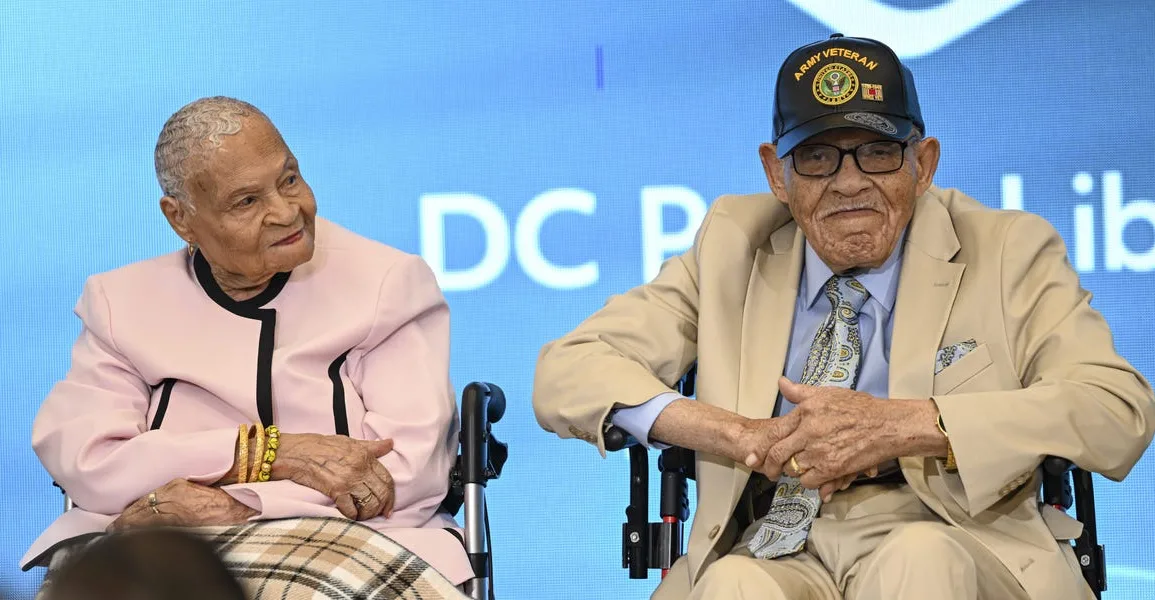- A judge dismissed a lawsuit brought forward by survivors of the Tulsa Race Massacre.
- Plaintiffs sought damages and a plan for the city to rebuild what was lost during the massacre.
- The city argued it didn’t need to pay because the plaintiffs didn’t prove they had a claim to compensation.
An Oklahoma judge dismissed a lawsuit brought forward by survivors of what historians call the “single worst incident of racial violence in American History” after lawyers for the City of Tulsa argued that the city’s connection to the event should not allow plaintiffs to “seek compensation.”
On Friday, court records show Judge Caroline Wall ordered that the suit — filed in September 2020 by three survivors of the Tulsa Race Massacre of 1921 — should be dismissed with prejudice.
This means that Lessie Benningfield Randle, 108, Viola Fletcher, 109, and Hughes Van Ellis, 102, can not refile the suit in the Oklahoma district court it was originally filed in. However, they can still appeal the decision to a higher court.
Randle’s home was destroyed and looted during the massacre, while siblings Ellis and Fletcher escaped with their family after their home was burned to the ground.
“We still remain blighted. We wish the DOJ would investigate,” Ike Howard, the grandson of Fletcher, told CNN following the ruling. “How can we get justice in the same city that created the nuisance? Is justice only for the rich?”
In an amended petition filed in 2022, the plaintiffs argued that the City of Tulsa created a public nuisance when it failed to act after white residents looted and burned down the prosperous Black neighborhood of Greenwood — sometimes referred to as Black Wall Street — killing an estimated 300 Black residents in the process. The lawsuit cites an Oklahoma statute that defines a public nuisance as “unlawfully doing an act, or omitting to perform a duty” that results in injury or harm to others.
The suit also pointed out the ongoing harm Black residents in Oklahoma suffered due to the massacre.
The plaintiffs also said that the city profited off these deaths by “marketing Black Wall Street” while refusing to pay reparations for or investigate the massacre. For example, the plaintiffs argued that the primary purpose of a $30 million history center built in the Greenwood District was to drive revenue for the city. The plaintiffs sought punitive damages, although they did not specify a dollar amount, as well as the replacement of buildings, homes, and businesses destroyed during the massacre.
The city moved to dismiss the suit, arguing that plaintiffs did not prove that they suffered “individualized injury” and that “simply being connected to a historical event does not provide a person with unlimited rights to seek compensation from any project in any way related to that historical event.”
In a statement to Insider following the ruling, Tulsa Mayor G.T. Bynum said that the city had not yet received the full order or an opinion on the case but was aware of the decision.
“The city remains committed to finding the graves of 1921 Tulsa Race Massacre victims, fostering economic investment in the Greenwood District, educating future generations about the worst event in our community’s history, and building a city where every person has an equal opportunity for a great life,” Bynum said in a statement.
The tragic 1921 massacre stemmed from an incident in May of that year after a white female elevator operator accused a 19-year-old Black shoeshine of attacking her. The massacre began following a spat between a white mob and a group of Black men trying to protect the shoeshine.
By the time the National Guard arrived, the neighborhood was burned to the ground. No one was ever held responsible for the damage or deaths.
Representatives for Justice for Greenwood, an organization representing the plaintiffs, did not immediately respond to Insider’s request for comment.



